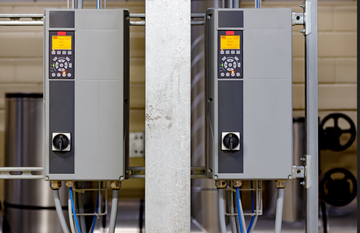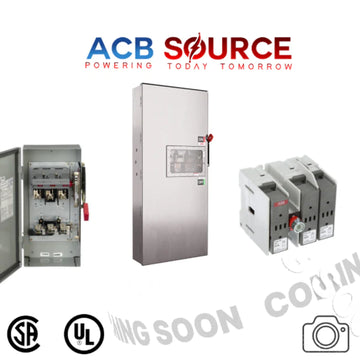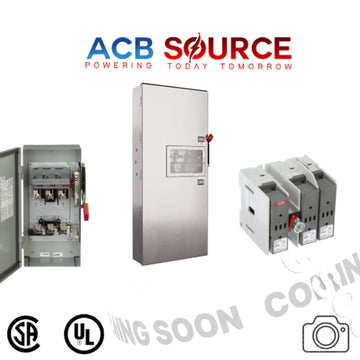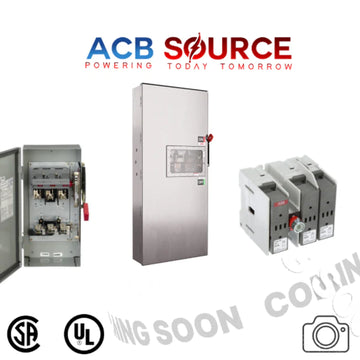Variable Frequency Drives (VFDs) and Soft Starters are both essential components in the realm of motor control, offering solutions to optimize the performance and efficiency of electric motors. However, when faced with the choice between VFDs and Soft Starters, many industries lean towards Variable Frequency Drives for their versatility and advanced functionalities. In this comprehensive guide, we explore the reasons why VFDs are preferable over Soft Starters, examining the advantages, applications, and key considerations that drive this preference.
Understanding the Basics
- Soft Starters:
Soft Starters are devices designed to gradually ramp up the voltage and current to a motor, preventing sudden acceleration and reducing mechanical stress during startup. They primarily serve the purpose of controlling motor starting torque and mitigating issues related to power surges.
- Variable Frequency Drives (VFDs):
VFDs, on the other hand, offer a broader range of control by not only regulating motor starting but also adjusting the speed and torque throughout the entire operating range. VFDs achieve this by varying the frequency and voltage supplied to the motor, allowing precise control over motor speed.
Advantages of VFDs Over Soft Starters
- Speed Control:
One of the significant advantages of VFDs is their ability to control the speed of the motor. Soft Starters, while effective in reducing inrush current during startup, do not provide continuous speed control once the motor is running. VFDs offer dynamic speed adjustments, making them ideal for applications requiring varying speeds.
- Energy Efficiency:
VFDs contribute to energy savings by adjusting the motor speed to match the required load. This is particularly beneficial in applications with varying loads, as VFDs can optimize energy consumption based on demand. Soft Starters, focused on reducing initial inrush current, do not offer the same level of energy efficiency during operation.
- Torque Control:
VFDs enable precise control over motor torque throughout the entire speed range. This feature is crucial in applications where maintaining a specific torque level is essential. Soft Starters primarily address torque during startup but do not provide the same level of control during operation.
- Acceleration and Deceleration Control:
VFDs offer smooth acceleration and deceleration of motors, minimizing mechanical stress on the system. This is particularly advantageous in applications where abrupt starts and stops can lead to equipment wear and tear. Soft Starters focus primarily on controlled startup, lacking the continuous adjustment capabilities of VFDs.
- Process Optimization:
Industries with processes requiring precise control and optimization benefit significantly from VFDs. The ability to adjust motor speed based on specific process requirements enhances overall efficiency. Soft Starters, designed primarily for motor starting, may not meet the dynamic demands of certain processes.
- Dynamic Braking:
VFDs provide dynamic braking capabilities, allowing for controlled deceleration of the motor. This feature is valuable in applications where rapid stopping or reversing is required. Soft Starters, designed for controlled startup, do not offer the same level of dynamic braking functionality.
- Compatibility with Multiple Motors:
VFDs can control multiple motors simultaneously, making them suitable for applications with multiple motors operating in coordination. Soft Starters are typically designed for individual motor control, limiting their effectiveness in systems with multiple motors.
- Remote Monitoring and Diagnostics:
VFDs often come equipped with advanced features such as remote monitoring and diagnostics. These capabilities enable maintenance personnel to monitor motor performance, identify issues remotely, and implement preventive measures. Soft Starters may lack these advanced monitoring functionalities.
- Adaptability to System Changes:
VFDs are highly adaptable to changes in system requirements. They can easily accommodate modifications in processes, load conditions, and motor specifications. This adaptability ensures long-term viability and flexibility in various industrial settings. Soft Starters may be less flexible in adapting to evolving system needs.
Key Considerations When Choosing Between VFDs and Soft Starters
- Application Requirements:
Consider the specific requirements of the application. If continuous speed control, energy efficiency, and dynamic adjustments are critical, a VFD may be the preferable choice.
- Budget Constraints:
Evaluate budget constraints and project requirements. While VFDs offer advanced functionalities, they may come at a higher initial cost compared to Soft Starters. Assess the long-term benefits and return on investment to make an informed decision.
- System Complexity:
The complexity of the system and the need for advanced control features influence the choice between VFDs and Soft Starters. For simpler applications with straightforward motor control needs, Soft Starters may suffice. Complex systems with varying loads and dynamic requirements often benefit from VFDs.
- Energy Efficiency Goals:
If energy efficiency is a primary consideration, VFDs should be favored. The ability to match motor speed to demand contributes significantly to energy savings over time.
- Maintenance and Monitoring Requirements:
Assess the maintenance and monitoring needs of the system. If remote monitoring, diagnostics, and adaptability to changes are crucial, VFDs provide a more comprehensive solution.
- System Integration:
Consider how the motor control system integrates with other components and systems within the facility. VFDs offer enhanced integration capabilities, making them suitable for complex industrial setups.
Conclusion
While both VFDs and Soft Starters play essential roles in motor control, the decision between the two depends on the specific needs of the application. In scenarios where precise speed control, energy efficiency, and dynamic adjustments are paramount, VFDs emerge as the preferable choice. Understanding the advantages and key considerations outlined in this comprehensive guide provides valuable insights for industries seeking to optimize their motor control systems and enhance overall operational efficiency.







